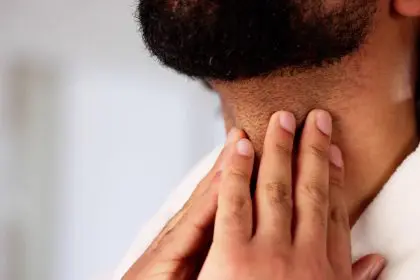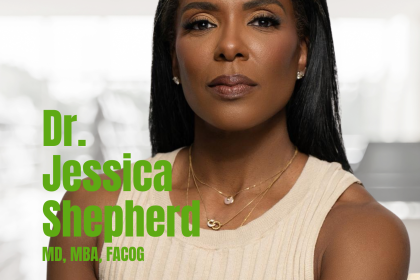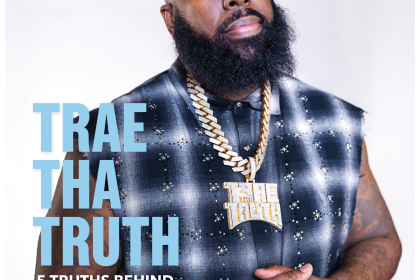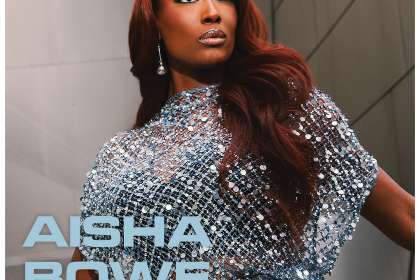
“This is not a problem of bad intentions. This is not a problem of just bad people and if we get the bad people out of the way, good results will necessarily follow. We have a very, very long history in this country of looking at African Americans through the lens of criminal justice and solving problems with African Americans through violence …” – Ta-Nehisi Coates on the systemic subjugation of black people in America (2015)
Twenty-five-year-old Freddie Gray was arrested on April 12, 2015, by Baltimore police officers. While in police custody, Gray fell into a coma and it was later determined that he’d suffered severe spinal injuries and damage to his voice box. He was pronounced dead on April 19. It has been alleged that Gray was injured during what is known as a “rough ride,” the deliberate unsafe transport of suspects during which they are placed inside an erratically driven police vehicle with no safety belt.
Protests throughout Baltimore began as Gray lay in a coma. In the days after Gray was pronounced dead following that fatal spinal injury, tensions in the city of Baltimore continued to simmer. Protests against the killing turned into clashes when the marchers entered retail districts; where many said that police officers and white patrons began antagonizing the crowd; resulting in 34 arrests and injuries to some officers. That tension finally boiled over on April 27, when crowds began smashing store fronts and burning police vehicles following Gray’s funeral service. The world watched with either empathy for the community’s anger and frustration, or judgment aimed at the “thugs” that they felt had gone too far. A curfew was implemented. The National Guard was called into the city.
After several days of public outrage, media scrutiny and political rhetoric, Marilyn Mosby, the state’s attorney for Baltimore city, announced that Gray’s death would be ruled a homicide and that the Baltimore police had acted illegally. “No crime had been committed [by Freddie Gray],” Mosby said on Friday, May 1, adding that Gray had “suffered a critical neck injury as a result of being handcuffed, shackled by his feet and unrestrained inside the BPD wagon.”
“The findings of our comprehensive, thorough and independent investigation coupled with the medical examiner’s determination that Mr. Gray’s death was a homicide … has led us to believe that we have probable cause to file criminal charges,” Mosby told reporters.
The announcement that the officers had been charged was met with relief from those who had protested on behalf of Gray; police officers and their representatives had a much different take on Mosby’s statements.
“The actions taken today by the state’s attorney are an egregious rush to judgment,” said Michael E. Davey, the police union’s lawyer. “We believe that these officers will be vindicated, as they have done nothing wrong.”
How much is Black life worth to White America?
Martin Luther King Jr. once wrote that the greatest impediment to racial progress in the United States is the virtual ambivalence of the White moderate. “I have almost reached the regrettable conclusion that the Negro’s great stumbling block in the stride toward freedom is not the White Citizen’s Counciler or the Ku Klux Klanner, but the White moderate who is more devoted to ‘order’ than to justice; who prefers a negative peace which is the absence of tension to a positive peace which is the presence of justice,” King stated in his 1963 Letter From Birmingham Jail. In the aftermath of Freddie Gray’s death, and on the heels of months of racially charged, high-profile killings by police officers, it is apparent that those White moderates are still largely tone deaf on the issues of police brutality — and the general overall predicament of Black communities in America.
The struggles of urban America have long been hiding in plain sight. The plight of Black people informs virtually every facet of our culture; from music to politics. It is past time for non-Black Americans to do more than just consume that culture while obscuring the very real oppression that creates it. Films and albums that have depicted the conflict between Black youth and police have proven quite popular with the “hip-hop generation,” but the White youth that consumed that music in the 1980s and 1990s have become dismissive of the reality it represented. Black pain is only worth noticing when it’s set to a good beat. And even then, once the song is over, the people should just “get over it” and “work hard” to improve their station in this society. Because none of these problems are actually institutional; at least, not according to many of those commenting via social media. No, these problems can be solved with solid parenting and a strong work ethic.
The willful ignorance surrounding the economic, social and political disenfranchisement of Black people in America continually feeds the proverbial monster. Black communities that are virtually ignored by the powers-that-be and consistently oppressed by thuggish police forces are hotbeds of unrest — and there is always another Freddie Gray set to happen at any moment. Instead of reacting to the reaction, those who profess to care have to attack the sources. Instead of simply being entertained by “The Wire” or raving about a Kendrick Lamar album, White America has to understand and address the role that its societal negligence and deliberate marginalization of these communities played in creating the very real backdrop for that “gripping” entertainment.
The announcement that the officers involved in Freddie Gray’s death would be arrested and charged was a welcome one for so many who’ve grown accustomed to justice moving slowly or not at all in situations such as these, and all eyes are on this moment.
“We must seize this opportunity to reform police departments throughout this country,” said the Gray family’s lawyer, William H. Murphy Jr.
“The larger message, if there is one, is that we’re moving on these things,” David A. Harris, a law professor at the University of Pittsburgh, said to the New York Times last week. “We’re taking them seriously, and there’s no longer going to be any kind of slowing down and taking it to the point where people wonder, ‘Whatever happened to that?’ ”
Protests and marches played a major role in the officers being charged — but we shouldn’t be so quick to disavow the impact that less “civil” uprisings can have in forcing the hand of city officials. Many, such as CNN analyst Wolf Blitzer, are all too eager to damn the violence in Baltimore last week as “not the answer”; demanding that we dismiss it and trotting out (and bastardizing) the name of MLK to try and shame all Black anger into submission. Riots may not be the answer, but they are a very understandable reaction to constant terrorism and erasure. When the system consistently fails these people, we can’t simply treat their frustration as irrational hysteria; this is what happens when a people have been muted by the larger culture.
Baltimore is a major American city with a Black mayor, a Black police chief, a Black city council president and a Black state’s attorney. But you don’t change a culture of anti-Blackness simply by adding Black faces to the ranks of those in power; racism is deeply entrenched and economically enforced. It’s shaped the demographics of urban America; failing school districts that are rezoned for the purposes of de facto segregation, parasitic business and home lending practices that have kept impoverished communities fiscally straitjacketed and ripe for gentrification, and a militaristic police culture that treats American neighborhoods like “war zones” and every antagonistic cop like he’s the American Sniper. Systemic problems don’t go away with personnel changes. And the oppression of Black people can’t simply be fodder for our favorite albums and television shows. America can’t continue to make movies about N.W.A while dismissing the animosity that creates a song like “F— the Police.” It’s time to face the music or American cities will continue to smolder.
Because Black people are hurting, angry and getting tired of singing the same old song to deaf ears.
Story by Stereo Williams
Images by DeWayne Rogers











